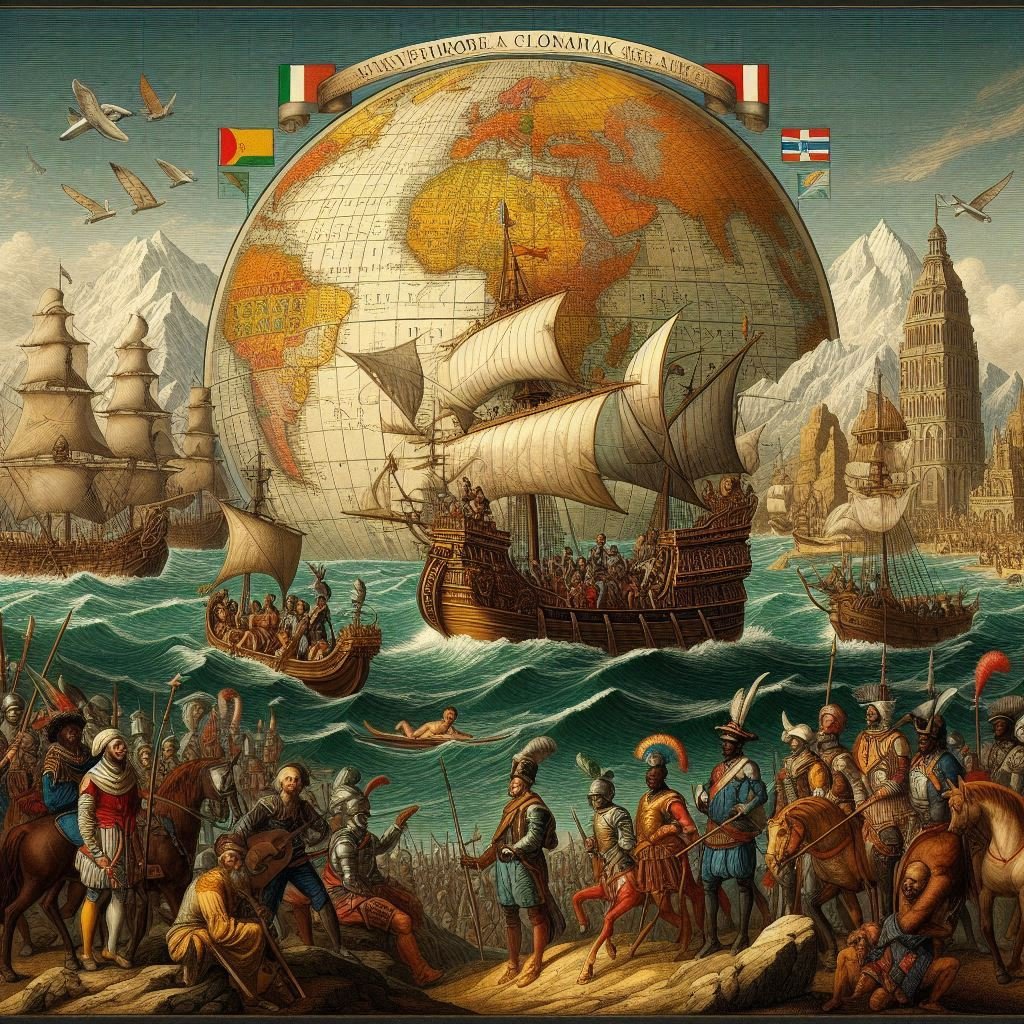Introduction: A New Era of Discovery and Conquest
The Age of Exploration, spanning from the 15th to the 18th centuries, marked a transformative period in world history. European powers such as Spain, Portugal, England, and the Netherlands began exploring the globe, driven by a desire for wealth, trade routes, and territorial expansion. This era saw the discovery of the Americas, Africa, and Asia by Europeans and led to the establishment of colonial empires.
While exploration opened up global trade networks and scientific discoveries, it also had a devastating impact on indigenous populations. The Columbian Exchange, the transatlantic transfer of plants, animals, and diseases, forever altered life in both the Old and New Worlds. This period not only shaped the modern world but also sowed the seeds of exploitation, slavery, and global conflict that would continue for centuries.
European Exploration: The Search for New Routes
In the early 15th century, European nations were eager to find new trade routes to the East, specifically to access valuable spices, gold, and silk from Asia. As the Ottoman Empire controlled land routes, explorers looked for sea routes. Portugal led the way with Prince Henry the Navigator, followed by Spanish expeditions funded by King Ferdinand and Queen Isabella. These voyages led to the discovery of new continents and the establishment of colonial outposts.
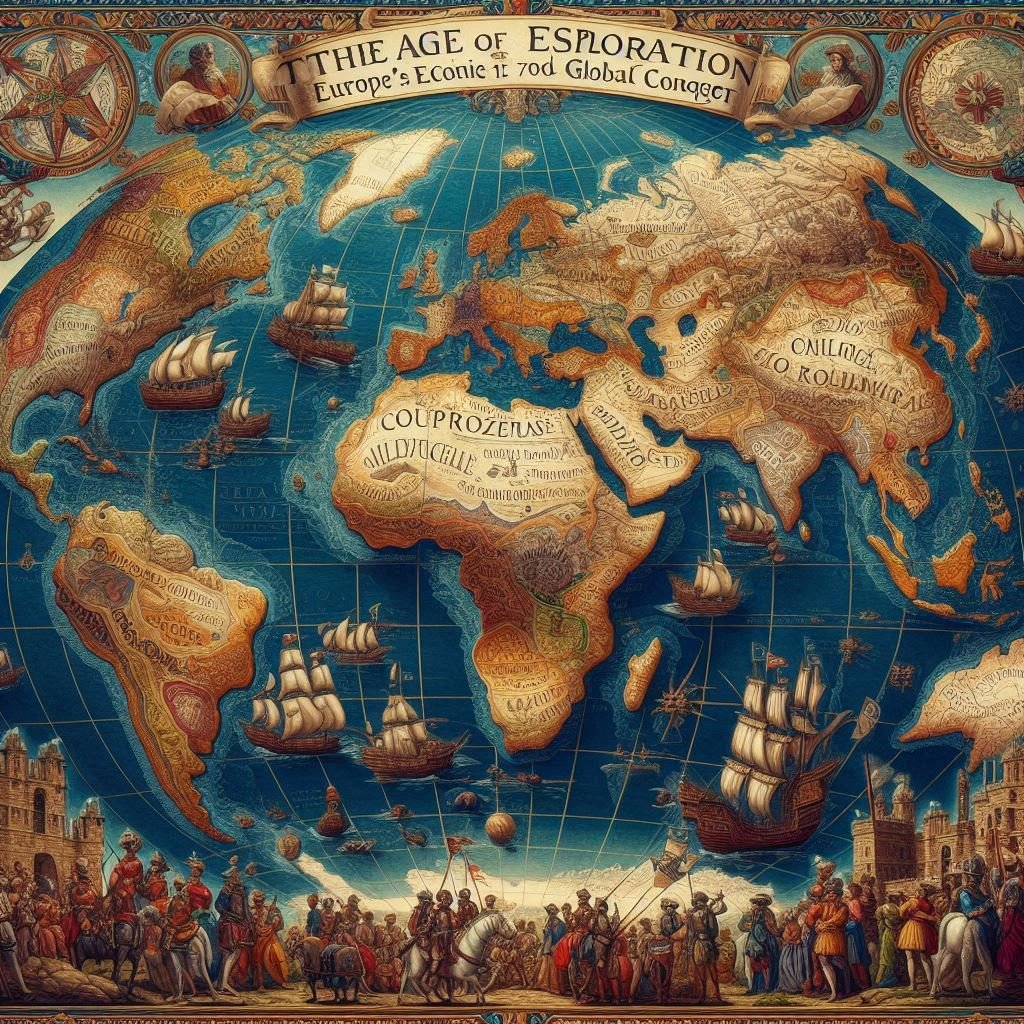
Key explorers like Christopher Columbus, who reached the Caribbean in 1492, and Vasco da Gama, who rounded the Cape of Good Hope to reach India in 1498, opened up unprecedented opportunities for trade and colonization. As European nations raced to claim new lands, this resulted in fierce competition and conquests that shaped the global map.
“You can never cross the ocean until you have the courage to lose sight of the shore.” – Christopher Columbus
Exploration Routes: Facts and Figures
| Figures & Facts | Details |
|---|---|
| Christopher Columbus | Reached the Americas in 1492 |
| Vasco da Gama | First European to reach India by sea in 1498 |
| Magellan’s Expedition | First circumnavigation of the Earth in 1522 |
| New Trade Routes | Opened routes to Asia, Africa, and the Americas |
The Impact of Colonialism: Trade and Exploitation
European colonization dramatically changed the global economy. Colonies in the Americas, Africa, and Asia became sources of raw materials and slaves for European powers. The Atlantic Slave Trade, one of the darkest aspects of this era, saw the forced migration of millions of Africans to the New World. The triangular trade system linked Europe, Africa, and the Americas, exchanging slaves, raw materials, and manufactured goods.
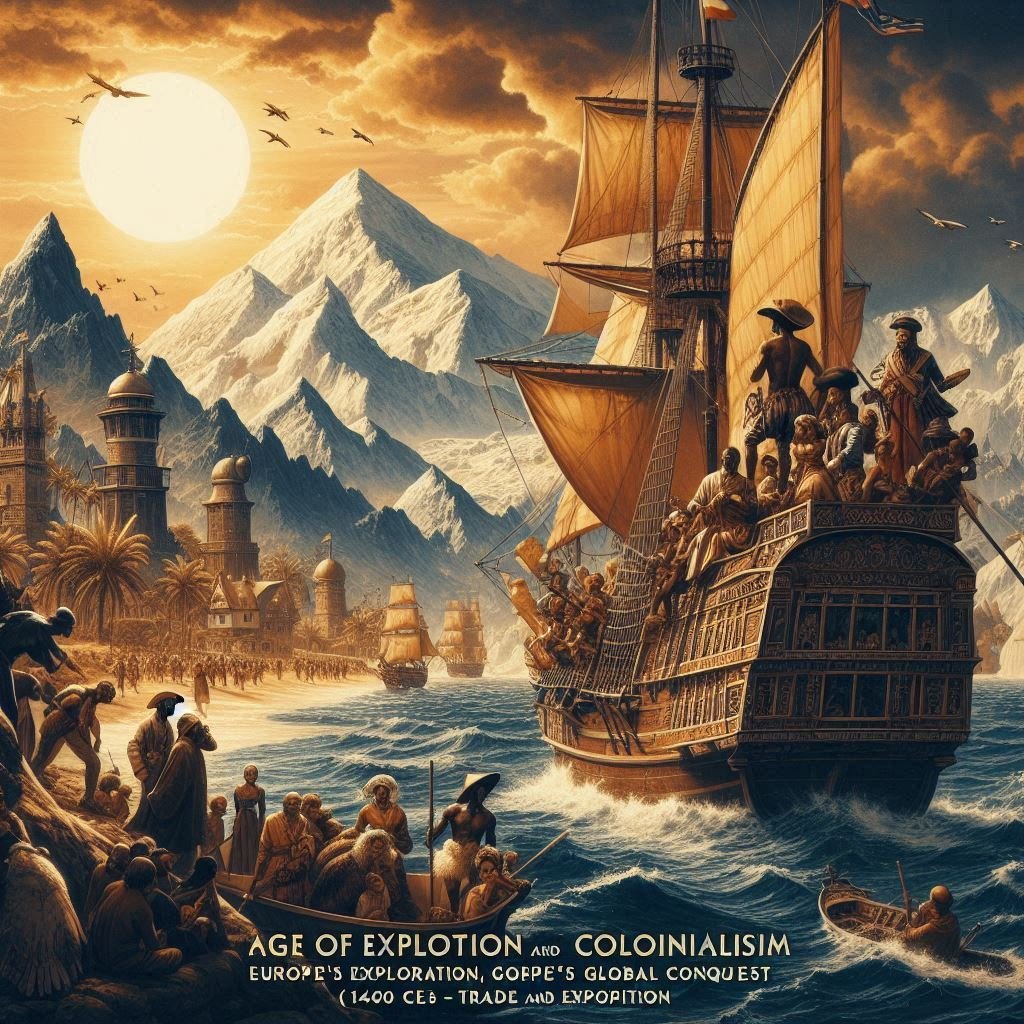
Colonial empires, particularly in the Americas, extracted enormous wealth from mining and plantation agriculture. The demand for sugar, tobacco, cotton, and silver fueled a mercantile economy, with indigenous populations often displaced or enslaved.
The Columbian Exchange led to the transfer of crops like potatoes, maize, and tomatoes to Europe, while livestock, wheat, and diseases like smallpox were introduced to the Americas. This biological exchange reshaped diets, economies, and populations worldwide, though it also decimated indigenous peoples due to unfamiliar diseases.
“The discovery of America, and that of a passage to the East Indies by the Cape of Good Hope, are the two greatest and most important events recorded in the history of mankind.” – Adam Smith
Colonialism and Trade: Facts and Figures
| Figures & Facts | Details |
|---|---|
| Atlantic Slave Trade | Over 12 million Africans transported (1500-1800) |
| Columbian Exchange | Introduced new crops and animals to both worlds |
| Silver Mining in the Americas | Vast wealth from silver mines in Peru and Mexico |
| Sugar Plantations | Sugar was a key export in Caribbean colonies |
The Indigenous Impact: Conquest and Collapse
The impact of European colonization on indigenous populations was catastrophic. In the Americas, entire civilizations such as the Aztec and Inca empires fell to European conquerors like Hernán Cortés and Francisco Pizarro. These civilizations, with sophisticated political systems, art, and architecture, were dismantled as Europeans imposed new governance, religion, and cultural norms.
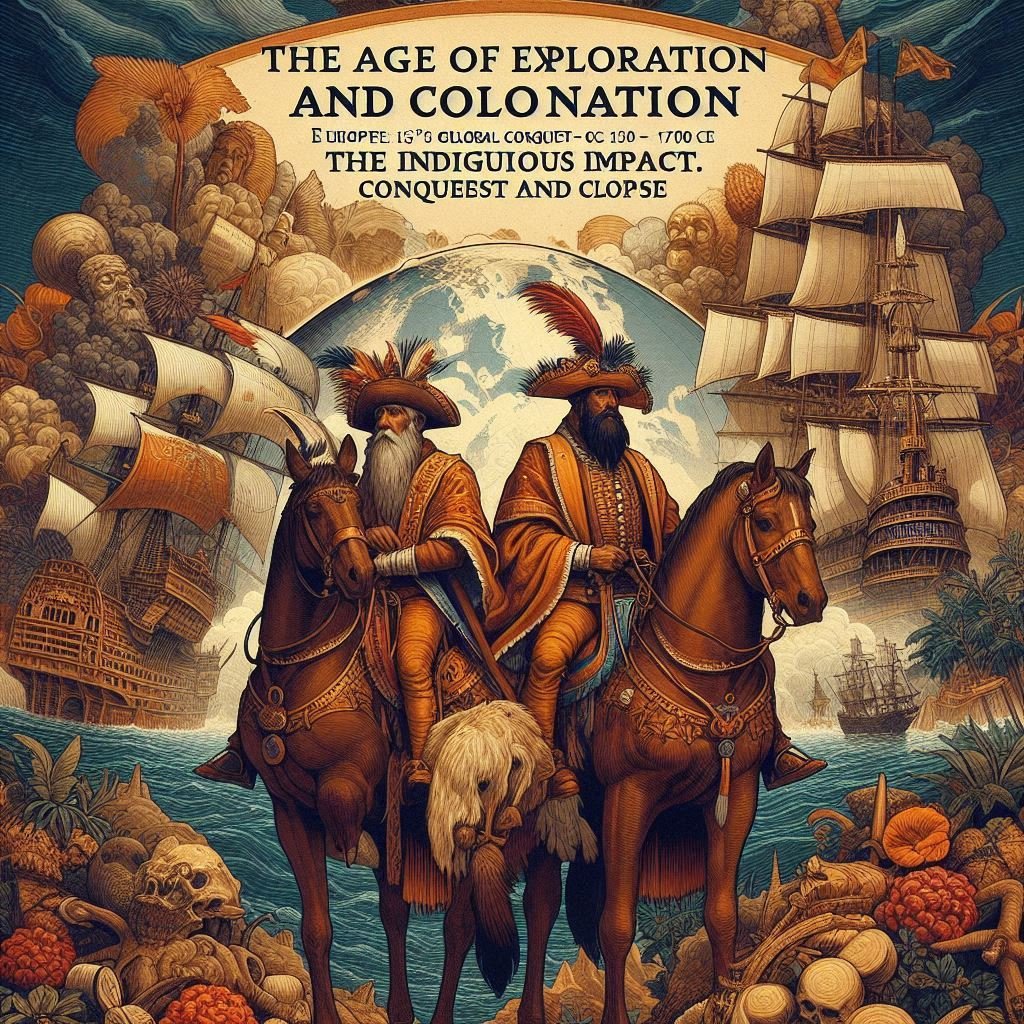
The arrival of Europeans also brought diseases like smallpox, measles, and influenza, to which indigenous populations had no immunity. These diseases caused the population collapse of native societies, wiping out nearly 90% of some indigenous communities.
In Africa, European colonialism fueled the slave trade, devastating many African societies. Meanwhile, in Asia, European powers established trading posts and controlled maritime routes, influencing political and economic structures.
“They made us many promises, more than I can remember, but they kept but one: they promised to take our land… and they took it.” – Red Cloud, Oglala Lakota leader
Indigenous Populations: Facts and Figures
| Figures & Facts | Details |
|---|---|
| Aztec Empire | Conquered by Cortés in 1521 CE |
| Inca Empire | Conquered by Pizarro in 1533 CE |
| Population Decline | Indigenous population in Americas fell by 90% |
| African Slavery | Over 12 million Africans transported to the Americas during the Atlantic Slave Trade |
Global Legacy of Exploration and Colonialism
The Age of Exploration dramatically reshaped the world, paving the way for the rise of European dominance. However, it also left a legacy of exploitation, slavery, and inequality that persists in modern geopolitics. While it brought about globalization and cultural exchange, it also caused immense suffering, particularly for indigenous peoples and African slaves.
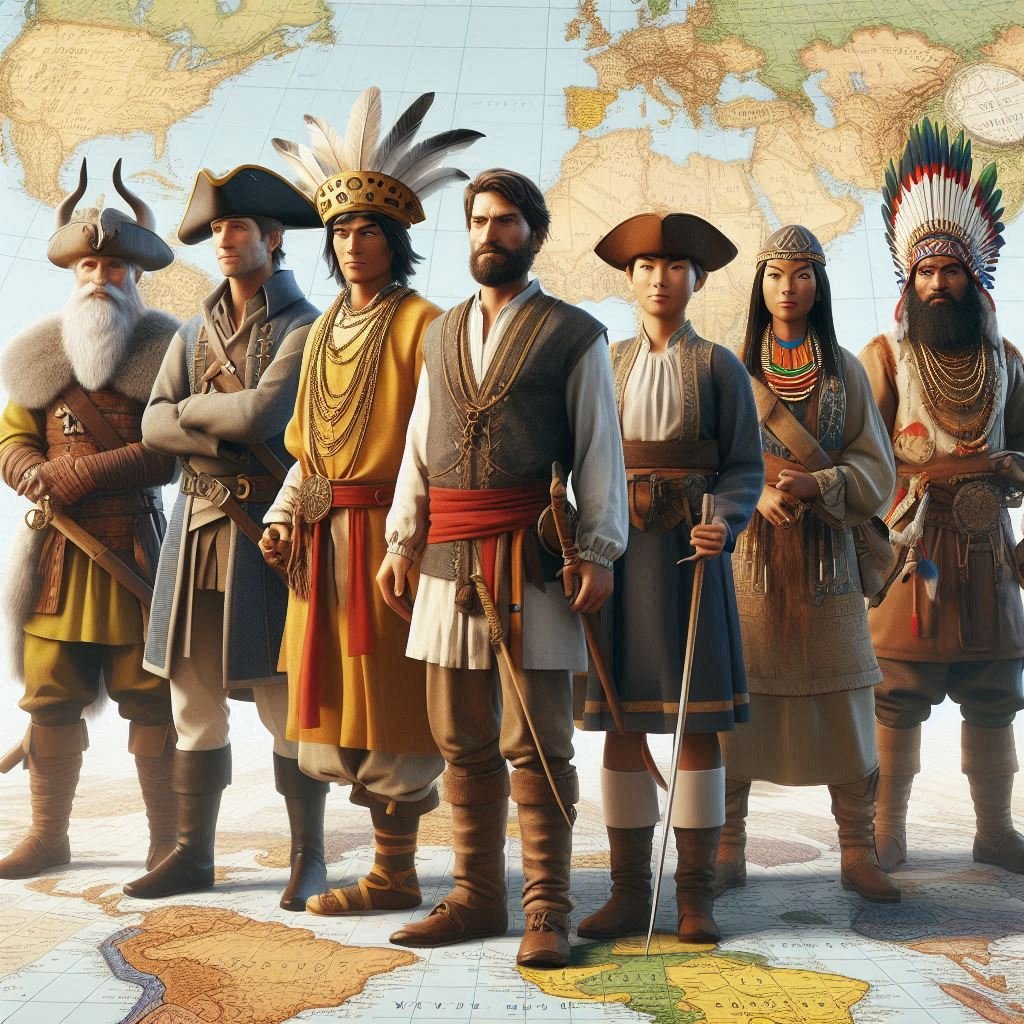
European colonization laid the foundation for the modern world economy, with the establishment of global trade networks and the spread of European political, cultural, and religious ideas. The changes set in motion during this period continue to influence global politics, economics, and culture.
“The sun never sets on the British Empire.” – A phrase describing the global reach of European colonial powers
Global Impact: Facts and Figures
| Figures & Facts | Details |
|---|---|
| British Empire | Controlled 25% of the world’s land by the 19th century |
| Columbian Exchange | Spread crops like potatoes and maize globally |
| Legacy of Colonialism | Modern borders, languages, and economies shaped |
Conclusion: The Dual Legacy of the Age of Exploration
The Age of Exploration and Colonialism was a time of unprecedented change. While it led to the discovery of new lands and the spread of trade, it also brought about great destruction to indigenous cultures and populations. This era laid the groundwork for today’s globalized world, but it also left a troubling legacy of inequality and exploitation.
The exploration and colonization of this period continue to influence the modern world, from the foods we eat to the languages we speak. However, understanding both the achievements and atrocities of this era is essential to fully grasp the impact it has on today’s world.
